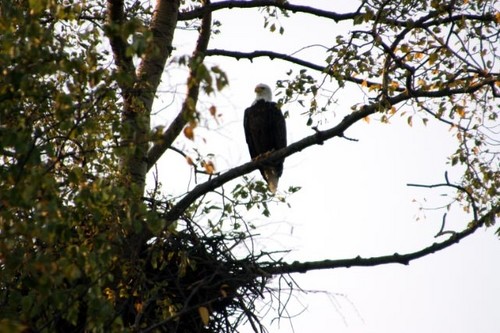The Wolter Report: Why ice is good and a Bird Report
The Wolter Report (Max Wolter DNR fisheries biologist, Hayward):
Why ice is good: The incredibly warm February could have area anglers thinking open water is just around the corner. While it might be nice to think about spring crappie fishing from a boat rather than an ice shack, there are some reasons to hope for a more normal ice-out date. In northern Wisconsin, many of our most popular species, such as walleye, musky and perch, have tuned to a specific seasonal rhythm.
When the ice goes out and water temperatures get to a certain threshold, it is time for those fish to spawn. For decades, ice-out consistently happened in mid-April on most area lakes. In recent years, however, ice-out has been much less predictable and that is a problem for fish tuned to spawn at a certain time. An early ice-out could mean that eggs have not fully developed when spawning season arrives and those smaller eggs have lower survival. A 2015 study in Lake Erie demonstrated this phenomenon in yellow perch that had lower reproduction following short winters. This is just one way we feel the effects of climate change locally.
Statewide birding report excerpts
On average, the first noticeable bird migration occurs in southern Wisconsin by very late February or early March, according to DNR wildlife research scientist Ryan Brady in Ashland. He says it is not surprising, given this year’s mild, low-snow winter, the northbound march is already underway for some species.
“Birders in southern counties noted a large push of Canada geese this week, along with respectable numbers of greater white-fronted geese. The first migrant sandhill cranes also returned, though not in large numbers, along with increased abundance and diversity of various duck species.
“Other short-distance migrants are becoming more visible now, including American robins, both meadowlarks, belted kingfishers, great blue herons and the first red-winged blackbirds. Some bald and golden eagles will move north this week as well, perhaps joined by a few turkey vultures, red-tailed and red-shouldered hawks.
“Great horned owls are now incubating eggs in the lower 2/3 of the state, bald eagles have just begun egg-laying and others are renovating nests. You might observe resident red-tailed hawks pairing-up or investigating nest sites – and one observer found mourning doves already courting and mating!
Brady says many other residents have ramped up their territorial singing behavior, including tufted titmice, black-capped chickadees, white-breasted nuthatches, northern cardinals, house and purple finches and various woodpeckers.
“Winter is not over by a long shot though, and traditional ‘winter’ birds remain, including bohemian waxwings in the north, pine siskins, lapland longspurs, snow buntings, rough-legged hawks, northern shrikes and a few snowy owls.
“As with many birds, their exit from the state is driven more by the length of daylight than weather.





